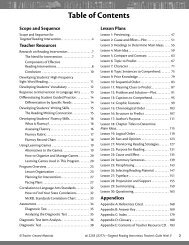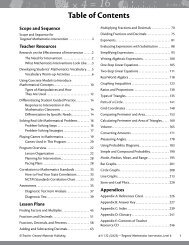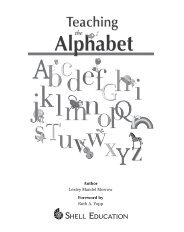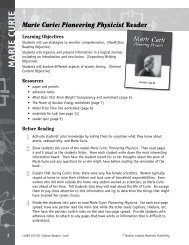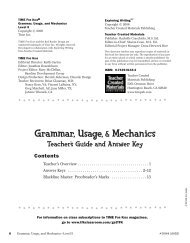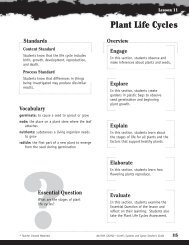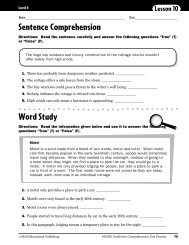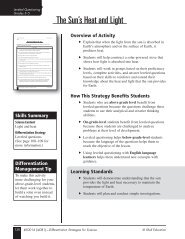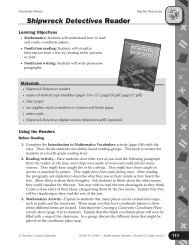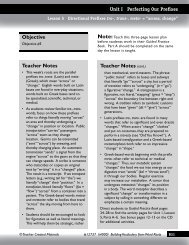George Washington Carver - Teacher Created Materials
George Washington Carver - Teacher Created Materials
George Washington Carver - Teacher Created Materials
You also want an ePaper? Increase the reach of your titles
YUMPU automatically turns print PDFs into web optimized ePapers that Google loves.
Unit 4: Plants<br />
<strong>George</strong> <strong>Washington</strong> <strong>Carver</strong>: Agriculture Pioneer<br />
Before Reading (cont.)<br />
6<br />
Tell students to use the sidebar information as they read to help them to better<br />
understand. Draw students’ attention to the structure of each page spread. There is a<br />
section of main text. Then there is information and/or pictures. These are often examples<br />
that further explain the main text. Explain that reading sidebar information is an<br />
excellent way to find additional examples and information.<br />
During Reading<br />
7<br />
8<br />
9<br />
10<br />
11<br />
Distribute the readers and have all students read through page 9. Then pause and ask the<br />
following questions:<br />
• How did the sidebar information help you to understand the main text?<br />
• On pages 8 and 9, it says that <strong>Carver</strong> was not able to attend the local school. What<br />
sidebar information is provided to indicate the books he used to become educated?<br />
Continue discussion in this manner as students read the remainder of the reader.<br />
Peanuts are not native North American plants. Discuss what this means with students.<br />
Reread page 15 about transplanted plants.<br />
Display the A World of Peanuts transparency displaying a blank world map. Use a world<br />
desk or wall map as a reference. Explain that peanuts originated in South America (color<br />
in South America with one color of transparency marker), then moved to West Africa by<br />
Portuguese settlers and traders (color in West Africa with a second color). Finally, peanuts<br />
came to North America (color in North America with a third color). Today, peanuts are also<br />
grown in Argentina, Sudan, India, China, Thailand, and Indonesia (color these countries<br />
with a fourth color).<br />
Discuss the regions of the world where peanuts are grown. What similarities do these<br />
countries share? Distribute A World of Peanuts (page 108) to students. (Students may<br />
need to reference a U.S. map.) Read the information and shade the states together.<br />
Then allow time for students to answer the questions. As a follow up, ask students, if<br />
they can, to bring in a peanut butter label. Working in groups, the students compare the<br />
ingredients among different brands, and look to see if the company boasts what percent of<br />
the product is peanuts.<br />
After Reading<br />
12<br />
Ask students to respond to the following questions:<br />
• How did <strong>Carver</strong> learn so much about agriculture?<br />
• How did he become a scientist?<br />
• How does his work in the past benefit people today?<br />
106<br />
#10531 (i2069)—Life Science <strong>Teacher</strong>’s Guide © <strong>Teacher</strong> <strong>Created</strong> <strong>Materials</strong>



